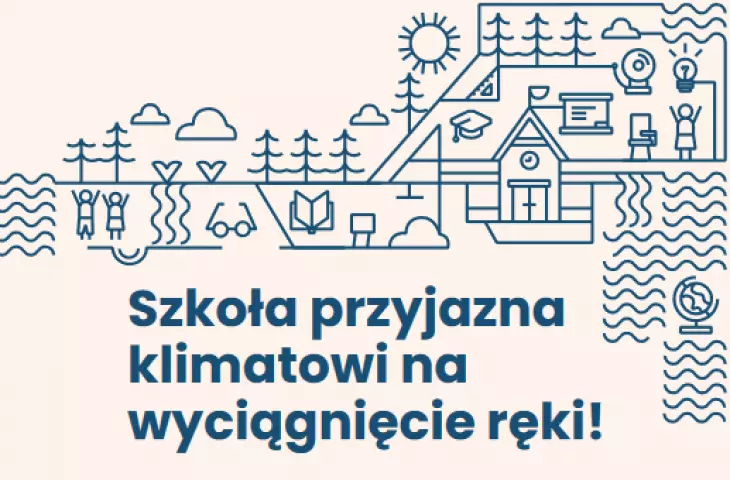Where, in fact, are civic attitudes best developed? In the immediate environment, and that for young citizens is school. What can be done to make this environment conducive to learning about nature?
As part of our #ReportThursday series, we present documents, reports and guides on architecture, cities and local government that are certainly worth publicizing and promoting. This week we look at the guidebook "Climate Friendly School at Your Fingertips!" compiled by Karolina Maliszewska and Judyta Luczynska. The document was released by the Sendzimir Foundation.
The document is available on the Sendzimir Foundation website.
Guidebook "Climate-friendly school at your fingertips!" developed by Karolina Maliszewska and Judyta Łuczyńska. The document was published by the Sendzimir Foundation
© Sendzimir Foundation
what a sponge soaks up in its youth
Negative phenomena related to urban space, such as "concretosis," may be the result not only of bad will, but above all of ignorance and unawareness of the subject of climate change. The fight against ignorance should have an appropriate place, and it can be a school where climate change adaptation solutions are applied.
Many of the solutions introduced in the immediate vicinity of schools could not only have a positive impact on the neighborhood, but could be a lively and active lesson on climate and the creation of green spaces. What actions can be taken to introduce such solutions?
list of tools to use
The guide begins with an overview of tools for schools that can be applied to their immediate surroundings. Their popularization is equally important already at this stage to avoid greenwashing.
What solutions are included in the guide? These include different types of rain gardens, the introduction and maintenance of shrubbery and trees, the creation and maintenance of flower meadows, vegetable gardens with compost piles, the preservation of permeable surfaces, or the creation and maintenance of green walls and roofs.
Each solution includes a page on its positive impact on the environment, how to implement it, averaged costs, and links to sources of information to increase your knowledge on the topic.
Each solution is elaborated on how to implement it
© Sendzimir Foundation
not only what, but also how
What will help to walk the first trails for school principals in implementing these solutions is not only an overview of them, but also an indication of how to start implementing them. One of the problems that may be encountered at the beginning of such a path is the question of how to encourage their introduction, how to plan these activities, how to take into account formal and legal issues, but also how to obtain funds for their implementation.
The guidebook created by the Sendzimir Foundation shows how to talk to encourage good solutions from children, parents and neighbors, how to plan activities that allow the phasing of each element of the investment, as well as how to find sources of funding for green activities. Guiding you step by step through each stage allows even less experienced people to implement these solutions.
start with an example
An example of implementing the proposed solutions is Elementary School No. 195 in Warsaw's Wawer district.
At SP No. 195 in Wawer, Warsaw, an educational path is available as an example for other schools
© Sendzimir Foundation
If we want to initiate a long-term change in the approach to greenery in the city, it must include education, but not necessarily in new subjects, but in everyday life around the school. The example of the Wawer facility shows that it can, and the Sendzimir Foundation's guidebook shows how it can be done.
The document is available on the Sendzimir Foundation website.
























